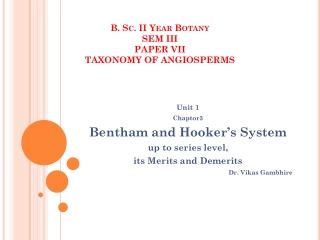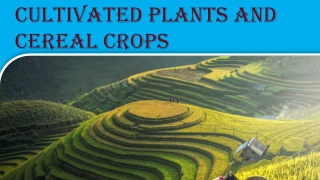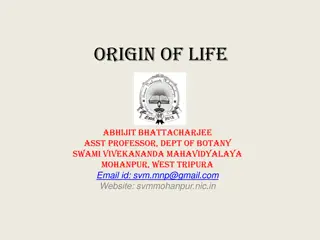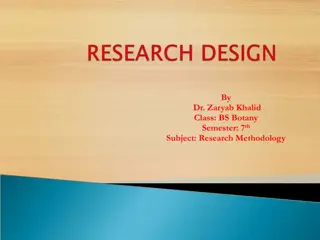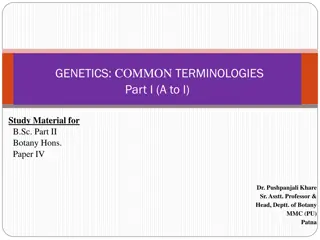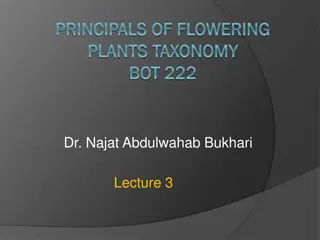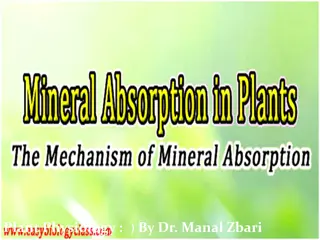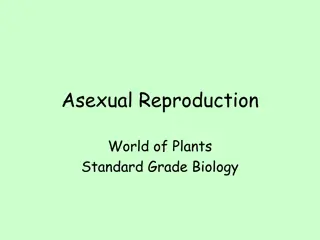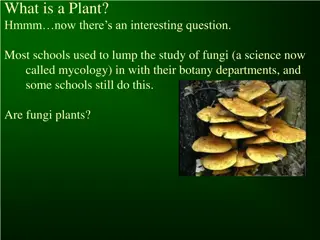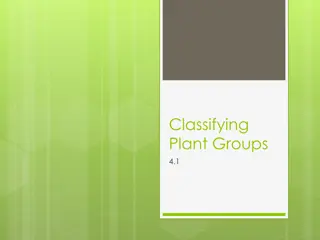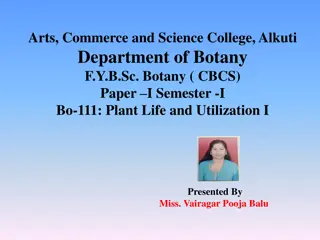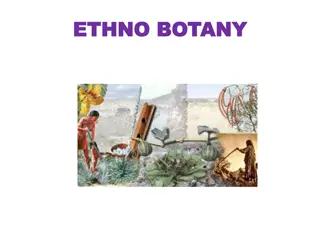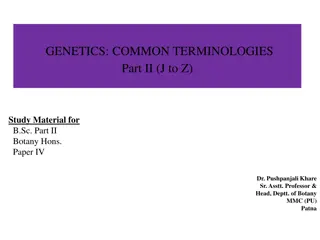Economic Botany: Deals with Various Uses of Plants for Well-Being
Economic Botany deals with the various uses of plants and plant products for the material well-being of mankind. It includes practical methods for improvement. Economic uses of plants vary depending on man's primary needs, including food, clothing, and shelter. These basic needs are supplied by nature and improved upon by man, especially with the application of biotechnological methods and science in general. Many economic plants occur naturally in the wild, while others are cultivated for food and industry. Economic plants may be classified based on their uses, such as food-cereals, legumes/pulses, vegetables, tubers, roots, leafy vegetables, and non-leafy vegetables.
Download Presentation

Please find below an Image/Link to download the presentation.
The content on the website is provided AS IS for your information and personal use only. It may not be sold, licensed, or shared on other websites without obtaining consent from the author.If you encounter any issues during the download, it is possible that the publisher has removed the file from their server.
You are allowed to download the files provided on this website for personal or commercial use, subject to the condition that they are used lawfully. All files are the property of their respective owners.
The content on the website is provided AS IS for your information and personal use only. It may not be sold, licensed, or shared on other websites without obtaining consent from the author.
E N D
Presentation Transcript
BOT 423 PART B
Deals with various uses of plants and plant products for the material well being of mankind.
It includes practical methods for their improvement.
Economic uses of plants varies depending on man s primary needs which is ever-increasing
These needs include those of food, clothing and shelter
These basic needs are supplied by nature and subsequently improved upon by man especially with the application of Biotechnological methods and science in general
Many economic plants occur in natural state (i.e. wild and uncultivated) most especially in the forest, while a good number are cultivated for food and industry
Economic plants may be classified based on their uses along the following lines
Food - cereals
Tubers - stem
Vegetables- leafy
Use of adequate amount and type of chemical fertilizers, compost, manure etc.
Selection of crops for a particular locality
Introduction of high yielding and disease resistant varieties
the main commercial sugar, used universally as a secretives. It is one of the best sources of energy available to man. An acre of sugar cane plant, from where cane sugar is sourced, yields more calories of energy than any other field crop covering the same area.
supply of sugar in the world. These include (1) sugar cane in the tropics (Saccharum officinarum- poaceae) and Marple (Acer saccharum) mostly in U.S. A.
from sugar-beet (Beta vulgaris chenopodaceae). Sugar is also obtained from some sugar palm including the edible date palm (Phoenix dactylifers) etc.
in Nigeria in wet guinea savannah and rain belt of Nigeria. Large acreage are also planted successfully under irrigation in the dryer Guinea savannah. The Niger state is one of the largest producer of all the states in Nigeria most especially for commercial purposes.
sugar. The remaining percentage goes into the making of unrefined sugar, sugar syrup and for chewing by man known world producers of sugarcane include India, Java, Hawaii and Brazil, Cuba, Egypt. Proper irrigation and the use of fertilizers are important factors in the cultivation of sugar cane. The plant is susceptible to many diseases, particularly red rot caused Collectotrichum sp
Milling of short lengths to squeeze out juice



